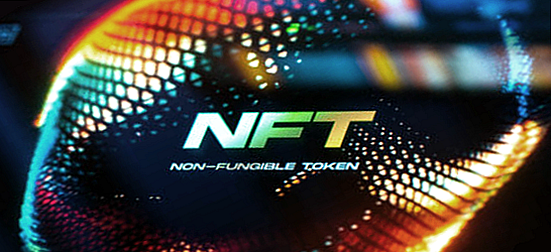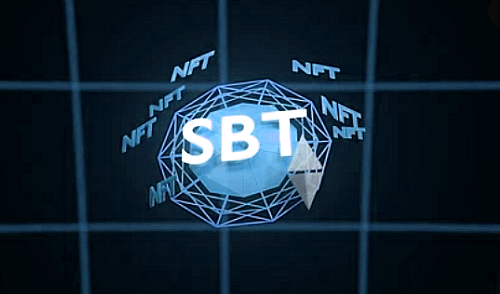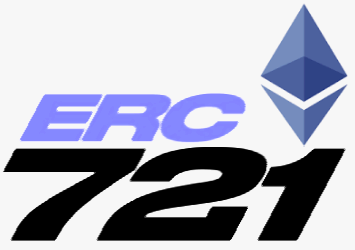Accredited InvestorsAltcoinAnatoli UnitskyAnti-Money Laundering (AML) In CryptoAPIArbitrageArtCoin TokenArticle DirectoryASICAuction Terminology GlossaryBasics of Stock Market InvestingBear MarketBest Crypto Payment Provider In the WorldBitcoinBlockchainBlockchain ConfirmationBlockchain Consensus MechanismBlockchain ForkBlockchain GlossaryBored Ape Yacht ClubBuild a Business That OutperformsBull MarketBuying SkyWay SharesByzantine Fault Tolerance (BFT) ExplainedCasascius CoinCentral Bank Digital Currency (CBDC)Centralized Crypto ExchangeCoinCoinsetCold WalletCollateralCommodity Futures Trading Commission (CFTC)Cross-Chain TechnologyCRUCrypto ExchangeCrypto GlossaryCrypto JokesCrypto Terms to KnowCrypto TickerCryptocurrencyCryptographyCryptojackingCryptounit BlockchainCryptounit GlossaryCryptounit ProgramdApp (Decentralized Application)Dead CoinDecentralized Exchange (DEX)Decentralized Finance (DeFi)Difference Between Bitcoin and EthereumDifferent Ways of Investing MoneyDigital CurrencyDistributed LedgerDo Your Own Research (DYOR)Dollar Cost Averaging (DCA)Dow Jones Industrial Average (DJIA)EncryptionERC-20ERC-721EthereumEvoScentFear Of Missing Out (FOMO)Fear, Uncertainty and Doubt (FUD)Fiat MoneyFNT Fintech CompanyGenesis BlockGlobal Unit PayGlossary of Banking TermsGlossary of Business TermsGlossary of Financial TermsHalvingHODLHot WalletHow Do I Start InvestingHow Rich is Satoshi Nakamoto?How to Create a BlockchainHow to Find Private InvestorsHow to Get Into FintechHow to Program Smart ContractsI Am Thrilled to Be a Part of This Global ProjectInitial Coin Offering (ICO)Initial Public Offering (IPO)Initial Token Offering (ITO)Innovation Basalt TechnologyInnovative Transportation TechnologiesInternational Bank Account Number (IBAN)Investing in Gold Mining StocksInvesting in Gold MiningJagerJoy of Missing Out (JOMO)Know Your Customer (KYC)LedgerLiquidity in CryptocurrencyMaker and Taker Fees in Crypto TradingMarket Capitalization (Market Cap)Meme CoinMetal Credit CardMetaMaskMillenials Now Have Access to Generational WealthMy Best Investment EverNew Digital EvolutionNFT GlossaryOff-Chain TransactionsOn-Chain TransactionsOpen Edition NFTPeer-to-Peer (P2P)Personal Loan GlossaryProbably the Best STO on the MarketProof of Stake (PoS)Real Estate Glossary of TermsReal Estate Investing GlossaryRebase TokenSecurities and Exchange Commission (SEC)Security Token ExchangesSecurity Token Offering (STO)Soulbound Decentralized Identities for Security TokensSoulbound ID Launch by Stobox Proves a SuccessSoulbound TokensStoboxStock Market GlossaryTestimonialsTether Platform and Token (USDT)UnitEx ExchangeUnitsky String TechnologiesUNTBUSDUValidatorWe Started Investing When We Were 25What are Blue Chip NFT?What are Blue Chip Stocks?What are Crypto Assets?What are Crypto Smart Contracts?What are CryptoPunks NFT?What are Digital Assets?What are Digital Collectibles?What are Gas Fees?What are Gas Wars?What are Hashmasks?What are Non Fungible Tokens?What are Non-Sufficient Funds (NSF)?What are Soulbound Tokens (SBT)?What are Stablecoins in Crypto?What are Transactions Per Second (TPS)?What are Utility NFTs?What are Utility Tokens?What Does Burning Crypto Mean?What Does Diamond Hands Mean?What Does Paper Hands Mean?What Does To The Moon Mean?What Does WAGMI Mean?What Happened to Satoshi Nakamoto?What is a 51% Attack?What is a Baby Boomer?What is a Backlink?What is a Banner?What is a Barcode?What is a Bid-Ask Spread in Crypto?What is a Block in Blockchain?What is a Block Reward?What is a Blockchain Address?What is a Blockchain Node?What is a Blockchain Oracle?What is a Blog?What is a Bond?What is a Bot?What is a Broker?What is a Business Accelerator?What is a Cash Cow?What is a Commercial Bank?What is a Commodity?What is a Con?What is a Credit?What is a Credit Limit?What is a Credit Rating?What is a Crypto Airdrop?What is a Crypto Bridge?What is a Crypto Scam?What is a Crypto Token?What is a Crypto Wallet?What is a Crypto Whale?What is a Crypto Winter?What is a Cryptocurrency Public Ledger?What is a Cryptocurrency Roadmap?What is a DAO?What is a Dark Pool?What is a Day Trader?What is a Dead Cat Bounce?What is a Default?What is a Derivative?What is a Digital Credit Card?What is a Fiscal Quarter?What is a Fungible Token?What is a Governance Token?What is a Grace Period?What is a Hard Fork?What is a Hot Wallet?What is a Hybrid Blockchain?What is a Hybrid PoW/PoS?What is a Joint Account?What is a Market Cap?What is a Merkle Tree in Blockchain?What is a Mining Farm?What is a Nonce? What is a PFP NFT?What is a POS System?What is a Prepaid Card?What is a Private Blockchain?What is a Private Key?What is a Public Blockchain?What is a Public Key?What is a Reserve Currency?What is a Ring Signature?What is a Routing Number?What is a Rug Pull in Crypto?What is a Safe Deposit Box?What is a Satoshi?What is a Security Token?What is a Seed Phrase?What is a Shitcoin?What is a Sidechain?What is a Soft Fork?What is a Spot Market?What is a State Bank?What is a SWIFT Code?What is a Tax Identification Number (TIN)?What is a Time Deposit?What is a Transaction Account?What is a Variable Interest Rate?What is a Virtual Assistant (VA)?What is a Virtual Card?What is a Virtual Currency?What is a Visa Card?What is a Whitelist in Crypto?What is a Whitepaper?What is Accounts Payable (AP)?What is AMA in Crypto?What is Amortization?What is an Accrual?What is an ACH Transfer?What is an Actuary?What is an Addendum?What is an Algorithm?What is an Angel Investor?What is an Annuity?What is an Asset?What is an ATM?What is an Atomic Swap?What is an Audit?What is an Avatar?What is an EIN?What is an Embargo?What is an Entrepreneur?What is an IDO (Initial Dex Offering)?What is an Interest Rate?What is an Internet cookie?What is an Investment Bank?What is an NFT Drop?What is an NFT Floor Price?What is an Ommer Block?What is an Orphan Block?What is an Outstanding Check?What is an Overdraft?What is Artificial Intelligence (AI)?What is B2B (Business-to-Business)?What is B2G (Business-to-Government)?What is Bartering?What is Bitcoin Dominance?What is Bitcoin Pizza Day?What is Blockchain Immutability?What is Blockchain Used For?What is BRICS?What is Business-to-Consumer (B2C)?What is C2C (Customer to Customer)?What is Capitalism?What is Catfishing?What is CFD Trading?What is Check Kiting?What is Cloud Mining?What is Communism?What is Content Marketing?What is Decentralization in Blockchain?What is DeFi in Crypto?What is Delisting?What is Depreciation?What is Digital Marketing?What is Diversification?What is Double Spending?What is Dumb Money?What is Dumping?What is Earnings Per Share (EPS)?What is Economics?What is Email Marketing?What is Equity?What is Etherscan?What is Fintech?What is Foreign currency?What is Forex?What is Fundamental Analysis (FA)?What is GameFi?What is Generative Art NFT?What is Gwei?What is Hard Currency?What is Hash Rate?What is Hashing in Blockchain?What is Inflation?What is Initial Game Offering (IGO)?What is Interest?What is Interest Income?What is Mainnet?What is Mastercard?What is Metaverse in Crypto?What is Mining in Cryptocurrency?What is Minting NFT?What is Mobile Banking?What is Money Laundering?What is NFT Alpha?What is NFT Metadata?What is NFT Rarity?What is NGMI Meaning?What is Nominal Interest Rate?What is Online Banking?What is Open-End Credit?What is OpenSea NFT Marketplace?What is Personal Identification Number (PIN)?What is Play-to-Earn?What is Polygon?What is Proof of Authority (PoA)?What is Proof of Work (PoW)?What is Public Key Cryptography?What is Pump and Dump?What is Quantum Computing?What is Refinancing?What is Retail Banking?What is Ripple?What is Sharding?What is Slippage in Crypto?What is Smart Money?What is Solvency?What is Soulbound ID?What is SSL?What is Staking in Cryptocurrency?What is Technical Analysis (TA)?What is Testnet?What is the Ask Price?What is the Better Business Bureau (BBB)?What is the Bid Price?What is the Dark Web?What is the InterPlanetary File System (IPFS)?What is the Gold Standard?What is the Lightning Network?What is the Prime Rate?What is the Sandbox?What is the Secondary Market?What is the World Bank?What is Tier 1 Capital?What is Tokenomics?What is TRC-20?What is Universal Banking?What is Unspent Transaction Output (UTXO)?What is Usury?What is Volatility in Crypto?What is Wash Trading?What is Web3?What is Whisper?What is XRP?What is Zero-Knowledge Proof (ZKP)?Who is Beeple?Who is Satoshi Nakamoto?Who is Vitalik Buterin?Why Tokenization is a Safe HavenWhy You Should Try Your Hand at Trading
Who is Beeple?
- Home
- NFT Glossary
- Who is Beeple?
Beeple's digital art has garnered significant attention for non-fungible tokens (NFTs), positioning him as a key influencer in the adoption of this technology.

Furthermore, his innovative creations serve as a real-life illustration of one of the practical applications of NFTs, potentially inspiring other artistic professionals to explore similar possibilities.
Who is Beeple?
Beeple (Mike Winkelmann by his real name), is an American digital artist and graphic designer who gained prominence in the world of non-fungible tokens (NFTs). Prior to his foray into NFT art, his work was showcased at concerts for prominent musicians such as Justin Bieber, Nicki Minaj, and Childish Gambino.
Beeple did not achieve fame through a lengthy career in traditional art galleries or specialized knowledge of NFTs. Rather, he stumbled upon the new medium through the recommendations of others and embarked on an experiment that yielded significant success.
Beeple's NFT art frequently employs references to political figures, pop culture icons, and other current events to satirize and interpret modern-day politics and culture. Notably, he has managed to capture the attention of the traditional art world with his animated NFTs, providing a platform for visual commentary on social and political issues.
What Propelled Beeple to Fame?
Beeple first began selling non-fungible tokens (NFTs) in February 2020, quickly capturing the attention of the art and technology worlds with his digital art sales, which often fetched tens of thousands of dollars. One of his earliest NFT pieces, Crossroad, was designed to change based on the outcome of the November 2020 U.S. presidential election and sold for $66,666.66, eventually reselling for $6.7 million.
Beeple's breakthrough moment arrived when Christie's, a legacy auction house, announced that it would be auctioning off his NFT art piece, Everydays – The First 5000 Days, marking the first time a major auction house sold a purely digital NFT piece of art and the first time Christie's accepted ether as a payment method. The artwork, which consisted of 5,000 individual images created by Beeple each day for over 13 years, sold for over $69 million.
Beeple's rise to fame may be attributed to his good timing, having entered the NFT space just as it was gaining momentum. Additionally, the COVID-19 pandemic's massive socio-economic changes led people to spend more time on digital devices, work from home, and be more receptive to new digital applications.
However, as with any hype cycle, the NFT craze has since cooled down, despite Beeple's Everydays NFT sale taking place during the peak of the boom.
The Impact of Beeple's NFT Art on Mainstream Perception
Beeple has played a significant role in changing people's perception of NFTs through his successful NFT projects. By selling digital art at high prices through NFTs, he has attracted mainstream attention to the combination of art and blockchain technology, demonstrating the new possibilities it offers. For instance, Christie's announcement of selling Beeple's artwork showed that NFTs could become a part of the elite culture and that art can be digital without physical properties.
During the pandemic, many artists, including celebrities, started considering NFTs as they offered a new way to showcase their creative pursuit and earn a living without performing physically. Beeple's debut art pieces, which featured art styles that were possible only in digital form, and his status as one of the world's highest-paid artists have been pivotal in bringing NFTs to the mainstream.
Beeple's success has demonstrated that NFTs are not only about money but also a means for artists to showcase their work and discover new ways of creating and distributing their art. As more artists continue to enter the NFT space, the perception of NFTs as a viable means of monetizing and showcasing digital art is expected to become more widespread.
Emerging Use Cases and Opportunities for NFTs
NFTs have gained mainstream attention due to Beeple's success in the art world, but their scarcity and uniqueness also make them ideal for a range of other applications beyond art. NFTs have great potential in areas such as gaming, music, and finance. In gaming, for instance, they can verify the authenticity of unique in-game items and provide new revenue streams through "play-to-earn" games.
Similarly, attaching audio to an NFT can create a unique piece of music that can be collected and traded. As only a small fraction of musicians can earn enough from their music to make a living, NFTs hold the potential to create a more equitable music industry through blockchain-based streaming platforms or royalty tracking.
NFTs can also serve as entrance tickets to events, opening up new possibilities for the creation of a secondary market based on access. Despite a slowdown in the NFT market in 2022, the technology continues to evolve and offer new possibilities, and we can expect to see many new iterations and use cases in the future.
Related Articles
What is an Avatar?
In recent years, avatars have become an increasingly popular use case for non-fungible tokens (NFTs), which are unique digital assets that are verified on a blockchain.

What are Non Fungible Tokens (NFTs)?
NFTs are created by a process known as minting, in which the NFT's information is published on a blockchain. At a high level, the minting process involves the...

Soulbound Tokens (SBTs)
The goal of Soulbound tokens is to make the NFT concept into a unique, non-transferable token that goes beyond money and status.

ERC-721
Fast forward to today, ERC-721 has taken center stage by launching countless non-fungible tokens (NFTs).
- Home
- NFT Glossary
- Who is Beeple?